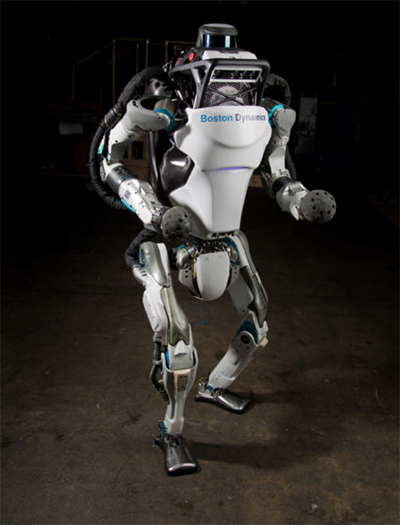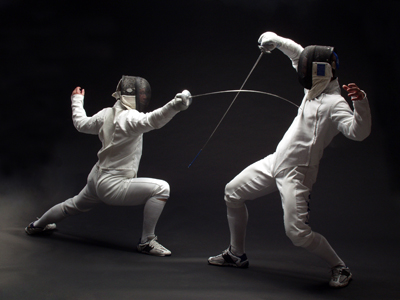
|
Okay, here is where I show either my great ignorance of science or a glimmer of common sense.
My understanding of quantum mechanics is based on reading various articles in science magazines, reading books about it for the lay reader, and watching The Great Courses lecture series on it. There may be things I don’t understand because I’m not a mathematician, but some of the claims seem to be more in the human mind than anything that’s going on in the universe.
Take the notion of quantum entanglement. Supposedly, two particles—two photons, say—can become entangled. Typically, this happens when the particles are created together. For example, when a rubidium atom is excited, its decay releases two photons, and they are entangled. Or a photon passing through a lens made of certain types of crystals will split into an entangled pair. They will remain entangled until one or the other interacts with something—that is, generally until it is observed by human interaction. And this entanglement, this connection, will persist across vast distances, and what happens to one of the pair, even at the far end of the galaxy, will be instantly communicated to the other. That is, the lightspeed restriction of general relativity on the transmission of information is ignored. This was the “spooky action at a distance” that Einstein questioned.
Supposedly, if two particles are entangled, they will have complementary but opposite qualities. For example, if one entangled photon has “positive spin,” then the other will have “negative spin.” But according to quantum mechanics, the characteristics of any particle at the quantum scale cannot be determined except by observation. Further, the existence of any particle is not determined—is not fixed in time and space, is not concrete, is not “real” in the world—until it is observed. This includes its exact location in space, its direction of travel, and qualities like its spin state. So, a photon’s spin may not only be either positive or negative; the photon’s spin is both positive and negative—that is, in a quantum superposition of both states—until the photon is observed and its spin is measured.
In another case, if a stream of photons is passed through a two-slit experiment—some going through one slit in a shield, some through the other—their intersecting fields will create an interference pattern, like waves passing through a narrow harbor entrance. This interference yields a series of parallel lines on a screen beyond the shield with the two slits. The interference lines will be heavier in the middle of the series and lighter out at the ends, indicating that most of the photons travel relatively straight through. Still, the result will not be two isolated bands of hits but instead a diffraction scatter.
But according to quantum mechanics, if a single photo is fired at the two-slit experiment, it does not necessarily hit the screen opposite one slit or the other. Instead, it may randomly fall anywhere within that diffraction pattern. The single photon passes through both slits, its field interferes with itself, and it acts as if it is in two places at once, until it is observed hitting the screen in only one place.
In a third case, some experiments with photons—including the famous Michelson-Morley experiment, which was used to disprove the idea that light traveled throughout the universe as a wave in a medium called “luminiferous ether”—employ partially silvered mirrors. These are mirrors that randomly reflect some photons and randomly pass others. If you set up a course of these mirrors, so that some photons take one path and some another, you can place detectors to see how many photons go which way. But interestingly, according to quantum mechanics, if you fire just one photon through the experiment, it will take both courses until it’s detected along one path or another. According to quantum mechanics, the photon’s position is everywhere in the experiment until frozen on one path by the act of detection or observation.
This idea of a particle at quantum scale being everywhere at once—with no fixed position, direction of travel, or defining characteristics until actually observed—is central to the nature of quantum mechanics. The physicists who practice in this field understand that the act of observing a tiny particle—a photon, electron, neutron, and so on, all of which are observed in flight—changes it. That is because you cannot observe anything that small without interfering with it—like hitting the detector screen beyond the slits or bouncing another particle off it in an electron microscope—and either stopping it in its tracks or deflecting it off toward somewhere else. The quantum world is not fixed or knowable until it is known by observation.
This is the example of Schrödinger’s cat. Seal a cat in a box with a vial of poison and a mechanism that breaks the vial when an atomic isotope decays. Until you open the box, the cat is both alive and dead—a superposition of these two states—and the cat’s actual condition is not resolved until you observe it. This is taking the quantum physicist’s belief in “unknowability” to an extreme.
I believe that part of the basis for this mindset is that quantum mechanics is a mathematical system, built on equations based on probabilities. In mathematics, it’s hard to build an equation around a statement that says a value might be one thing or it might be another. Instead, you place a probability function in place of the necessary value. So, in the experiment with Schrödinger’s cat, the cat’s life or death has a probability based on the nature of the isotope and the length of time in the box. If the isotope has a half-life of ten thousand years, and the cat has been in the box ten minutes, there’s a high probability the cat is still alive. If the isotope has a half-life in seconds, like some isotopes of oxygen, then the cat is likely dead. But the probability function is not resolved until the cat is observed.
In the case of two entangled photons, the probability of either one being positive or negative spin is fifty percent, an even coin toss. And, in the mindset of quantum physicists, once the spin of one photon in the pair is established and fixed, the spin of the other is also fixed. The fifty-percent probability function collapses and all is known. The question in my mind is not whether the two photons communicate with each other across the spacetime of the span of a galaxy, but how the observer at one end can communicate the discovered state to the non-observing holder of the photon at the other. If the holder of the passive photon observes it, then yes, he will know its spin state and resolve the probability function to his satisfaction. He will also know instantly that the distant photon has the opposite spin. But he can’t communicate any of this to his partner holding the other photon until his message travels across the lightyears. So, big deal.
Say I cut a Lincoln head penny in half across the president’s nose. One half the coin shows his eyes and forehead; the other shows his mouth and chin. Without looking, I take each half-coin and seal it in an envelope. I give one to my partner, who takes it across the galaxy. If he opens his envelope and sees mouth-and-chin, he knows that I must have eyes-and-forehead. And vice versa. But I won’t know what I have—unless I wait eons for a light-speed signal from him—until I open my own envelope. The penny, existing in a classical, non-quantum world, has an established state whether I look or not. It does not exist in a superposition of both eyes-and-forehead and mouth-and-chin until one of us observes it.
My point—and I certainly may be misunderstanding the essence of quantum mechanics—is that the concept of superposition, of probability functions, of tiny things being in two or more places, two or more states at once, and going nowhere until observed by human eyes and instruments is a thoroughgoing mindset. It’s a reminder to the quantum physicist that you don’t know until you observe. It says that the whole conjectural world of the very small is just that: conjecture, theory, and a mathematical construct until human instruments intervene to prove a thing is so or not so.
And that’s a good reminder, I guess. But taking it to the extreme of denying that the cat is neither alive nor dead—even a very tiny cat who makes no noise and is otherwise undetectable—until you open the box … that calls into question the reality of the entire enterprise.



